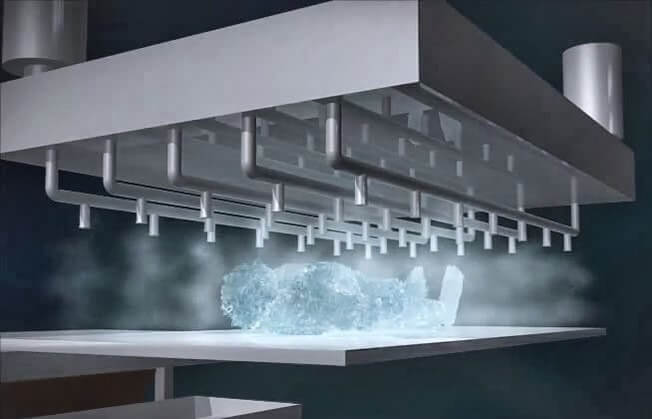
This Clean Alternative To Cremation Involves Freeze-Drying And Then Shattering Your Corpse
Brutal.
By Sarah Biren | Guest Writer
Unfortunately, we are all going to die. We don’t like thinking about it, especially about what would happen to our bodies. Typically, the choices are burial or cremation. However, they come with potentially negative effects, such as overcrowding cemeteries and the release of carbon monoxide into the air. But now there may be a more environmentally-friendly albeit controversial option: promession. The only thing is this: it’s not legal. However, that might change in the future.
An Alternative to Cremation and Burial
Promession is a theoretical process developed by Swedish biologist Susanne Wiigh-Mäsa. It involves freeze-drying the body to prepare it for natural decomposition. Essentially, the body in the casket goes into a large tub of liquid nitrogen set to -196 degrees Celsius. Then the casket is removed; it’s so brittle, that it breaks from minor vibration. The leftover water gets evaporated, and what remains resembles a powder. Magnets remove any metals, like teeth fillings. Then the remains go into a biodegradable container and are buried just one foot under the earth. [1]
This might sound like a strange ritual out of a science fiction novel, but it has worked effectively on deceased pigs. Because the process is still illegal for humans, Wiigh-Mäsa and her team practiced promession on already-dead pigs, whose flesh’s texture is similar to humans?
Meanwhile, cremation is the most popular method of burial in the United States. However, it’s not good for the environment. It takes about two and half hours to completely burn a body. Bodies naturally contain sodium chloride, which releases toxins while burning, in addition to the toxins released by the mercury in teeth fillings and metal limbs. Plus, the fire cannot burn bones and any added metal. These pieces are destroyed separately in a machine called a cremulator.
Additionally, many coffins are bad for the soil. The wood finish can be toxic and gives no nutrients back to the earth. It also encloses the body, preventing it from properly decomposing. However, the biodegradable container used after promession breaks down over a few months and becomes a fertilizer. Also, people who opt for promession could be buried at a traditional gravesite with flowers or a tree growing overhead. The fertilizer can help the plants flourish. Hence the cycle of life continues.
Let’s Talk About Death
But promession is not available yet. In 1997, Wiigh-Mäsak began to experiment, wanting to find a better option than cremation and traditional burials. So she began to work on her method of “Ecological Burial” but received no legal approval to make this an available option. In the meantime, she’s backed by many supporters and investors. Some people believe so strongly in her work that their corpses are frozen in storage until promession’s legalization.
In Sweden, the cremation industry pushes back against promession. It has reached the point that Wiigh-Mäsak has claimed the Swedish Federation of Cemeteries and Crematoria (SKKF) are out to discredit her. It’s impossible to know the extent of promession’s benefits and pitfalls until they test it on human bodies. But the Federation of Crematoria maintains that Wiigh-Mäsak’s technology does not work and refuses to entertain questions on the process. [2]
Meanwhile, Wiigh-Mäsak holds that promession may help remove some of the taboos around death. It’s an important topic but a very uncomfortable one. She believes the industry around cremation is using this to their advantage. As she told Wired, “I think it’s very convenient for the cremation industry to sustain the taboo because then they can work on their own without any questions.” She thinks it’s time for a change in the post-mortem landscape, especially since continuing the cycle of life can feel comforting to grieving loved ones.
Despite studying death all of her life, she never found the topic depressing. “We don’t see the dead body as the final end. Well treated, the body will support something new, life will continue. And that is going to create a totally new relation to death and dying of the body. It also makes it possible to start talking about death.” [3]
Sources
- “Freeze-drying dead bodies could be the future of cremation.” New York Post. Saquib Shah. April 16, 2018
- “This New Clean Alternative To Cremation Involves Freeze-Drying And Then Shattering Your Corpse.” Ranker. September 23, 2021
- “Freeze-drying the dead could help save the planet.” Wired UK. Nicholas Tufnell. October 14, 2013
- “Green burials: Everything you need to know about the growing trend.” CBC. Chloe Rose Stuart-Ulin. October 29, 2019
